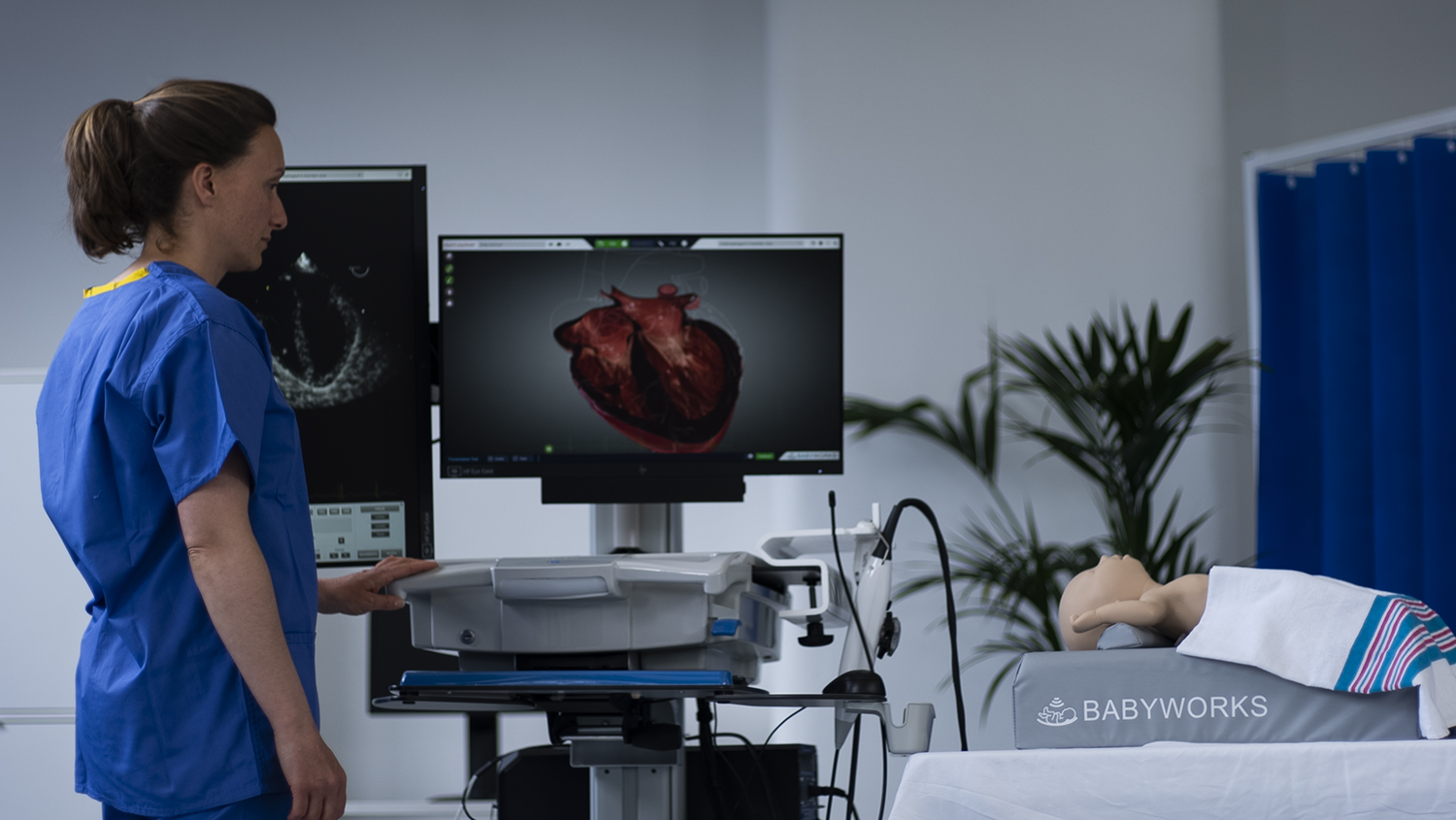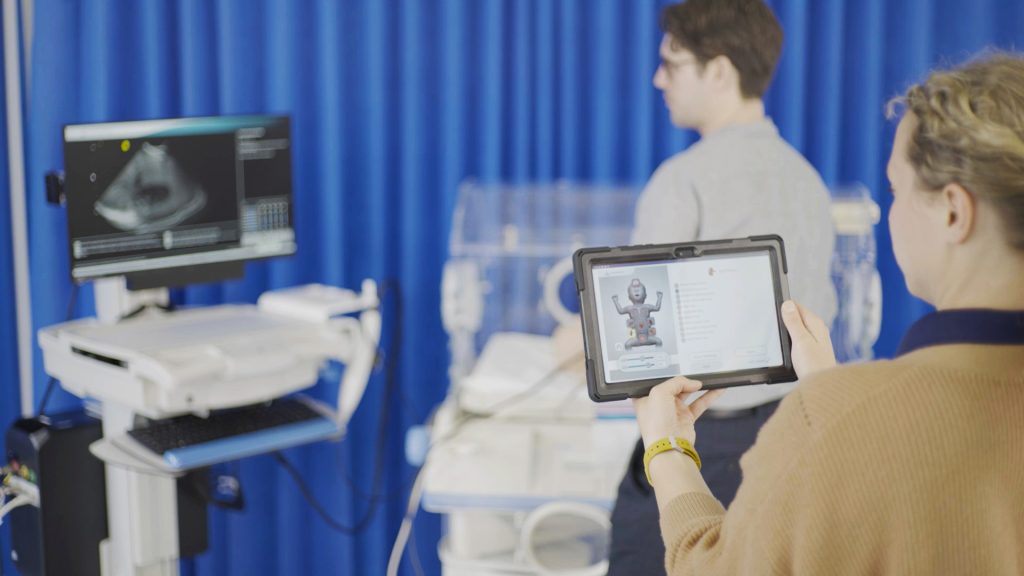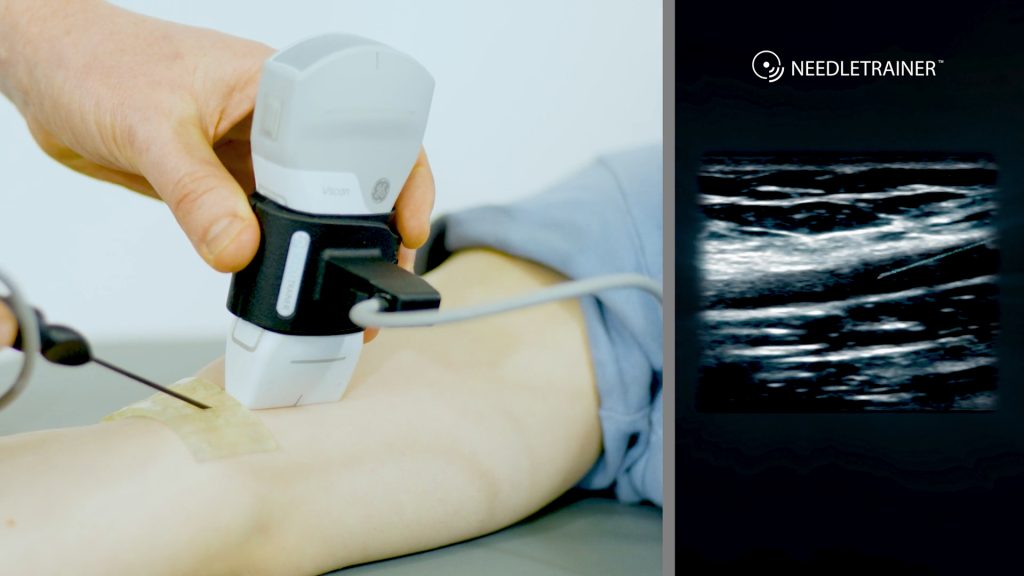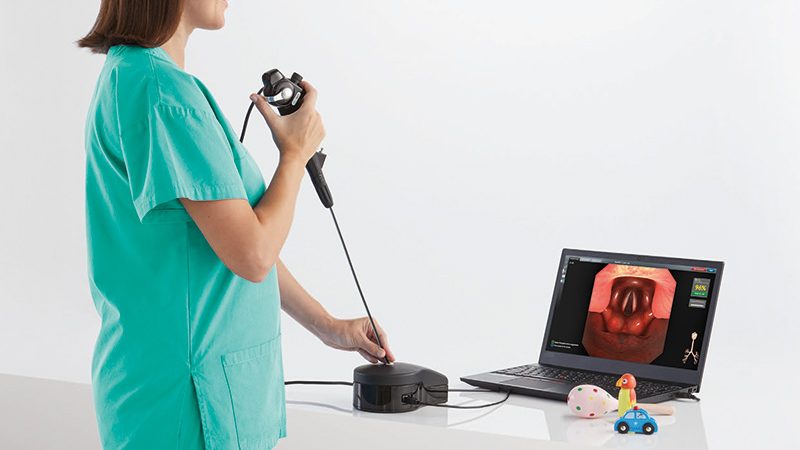
Transforming Pediatric and Neonatal Training with Simulation
The “see one, do one, teach one” model has historically served as a cornerstone in medical training. However, in pediatric and neonatal care—fields that require high precision, gentle handling, and a thorough understanding of unique patient physiology—this approach presents specific challenges. Simulation technology, including Intelligent Ultrasound’s BabyWorks, NeedleTrainer, and ORSIM Pediatric solutions, offer a safer, more effective way to train healthcare professionals in infant imaging procedures. We discuss how simulation addresses the pain points of pediatric and neonatal education, fostering a new generation of skilled, confident practitioners ready to deliver high-quality care.
Key Challenges in Pediatric and Neonatal Ultrasound Training
Pediatric and neonatal ultrasound requires specialized techniques to navigate small, sensitive anatomy and rapidly changing physiology. Trainees must also manage patient movement and the subtle presentation of pediatric conditions, which increases the complexity of both learning and teaching these skills. Traditional training methods are further challenged by ethical and safety considerations, as repeated practice on neonatal and pediatric patients isn’t feasible.
For educators, the stakes are high: mistakes can have serious consequences in pediatric care. Simulators like BabyWorks, NeedleTrainer, and Orsim Pediatric not only mitigate these risks but also allow trainees to practice and master complex techniques in a controlled, supportive environment.
Intelligent Ultrasound Solutions: Meeting Training Needs in Pediatric and Neonatal Care
1. BabyWorks: Bridging the Knowledge Gap in Infant POCUS and Cardiac Ultrasound
Point-of-care ultrasound (POCUS) and cardiac ultrasound are vital tools in pediatric and neonatal care, yet mastering these applications requires rigorous practice. BabyWorks was designed to bridge the gap between theory and practice by offering true-to-life imaging and an infant manikin that replicates lifelike anatomy, empowering trainees to explore and understand these areas without needing patient volunteers.

Using BabyWorks, trainees gain exposure to various ultrasound techniques, from neonatal cardiac imaging to lung and abdominal scans. This simulator provides opportunities to learn probe handling, fine-tune their technique, and build confidence in recognizing abnormalities, all within a risk-free environment. BabyWorks’ real-time feedback system enables educators to assess performance objectively, ensuring that trainees develop their skills to the required standards before moving on to live patient cases.
2. NeedleTrainer: Building Competency in Vascular Access
Vascular access is a high-stakes, challenging procedure, especially in pediatric patients where smaller veins and anxious patients increase the difficulty of accurate needle placement. NeedleTrainer addresses these challenges by allowing trainees to practice ultrasound-guided needle insertion on real ultrasound, without the risk of patient harm.

NeedleTrainer’s technology creates an immersive training environment where clinicians can work on vascular access skills, refining hand-eye coordination, pressure sensitivity, and patient positioning – all using non-invasive needling with a live ultrasound. This repeated, safe practice helps to prepare clinicians for real-world practice, ensuring that clinicians are prepared to perform vascular access procedures smoothly and confidently.
3. Orsim Pediatric: Perfecting Airway Management Skills in Young Patients
For practitioners involved in pediatric critical care, mastering airway management is essential. Orsim Pediatric enables comprehensive airway management training, allowing trainees to practice pediatric bronchoscopy safely. This simulation tool provides a valuable opportunity to develop and refine airway techniques, ensuring that practitioners can respond effectively to emergencies involving pediatric patients.

Flexible bronchoscopy is an essential technique for managing the difficult pediatric airway, which is smaller and more reactive than the adult airway. Orsim Pediatric offers realistic haptic feedback, intuitive visuals, and an interactive, scenario-based design that prepares trainees for real-life challenges.
Addressing Core Needs with Intelligent Ultrasound Simulation
Each of these simulators – BabyWorks, NeedleTrainer, and Orsim Pediatric – addresses critical aspects of pediatric and neonatal medical training, from patient safety to procedural accuracy and trainee confidence. By integrating simulation into training programs, educators can offer their learners valuable hands-on experience while maintaining patient welfare. This shift empowers a new generation of clinicians to enter their fields with a higher level of preparation and confidence than ever before.
Shaping the Future of Pediatric and Neonatal Education
Intelligent Ultrasound’s suite of simulation tools offers a safe, effective way to overcome the inherent challenges in pediatric and neonatal education, from mastering unique anatomy to developing confidence in high-stakes procedures. Through simulation, the next wave of pediatric and neonatal practitioners can develop their skills fully, knowing they are ready to deliver exceptional care to their youngest, most vulnerable patients.
Safe and effective training tool for pediatric and neonatal ultrasound.
Realistic, Safe & Effective Training in Ultrasound-Guided Needling.
Hands-on, Safe, Trainer for Advanced Bronchoscopy Skills.


